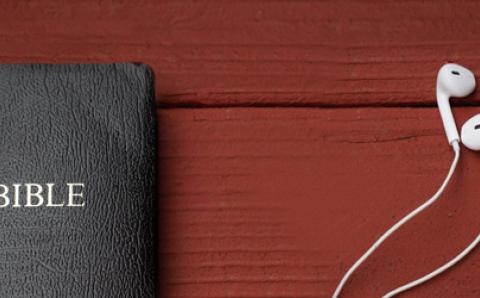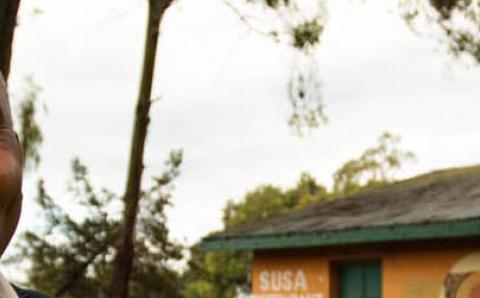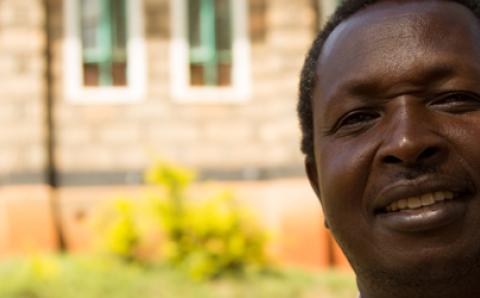What does it mean to be green? It doesn’t mean smearing your face with green paint or wearing a cool green shirt on St. Patrick’s Day. Wearing green does not make you a green person. A “green” person is someone who takes good care of our planet Earth.
Why Be Green?
Genesis 1 tells us that God created the heavens and the earth. God made the clear blue sky and the mighty mountains. God made the emerald forests, calm rivers, and teeming oceans. He made all the swarming, crawling, flying, swimming, walking creatures that live in the air, in the water, and on the land. Then God commanded Adam and Eve to take care of the world he had made.
Now it’s our turn! God has given us the job of caring for his beautiful world so that our children and grandchildren can enjoy it too. Being green is one big way we show our thankfulness and praise for God’s good green world!
Reuse, Reduce, Recycle
These three “R’s” are ways to go green: reuse, reduce, and recycle.
When the garbage truck comes and collects the trash from your house, where does it all go? Trash collected from homes, schools, and other businesses is taken to a landfill. A landfill is a large area of land that is used to store garbage. To create a landfill, bulldozers dig a huge pit. A special layer of material is added to cover the bottom of the landfill. Then all those trucks empty their loads of trash into these pits. Layers of trash are covered with soil and other materials to help keep the trash from leaking harmful gases and liquids into the ground. Did you know that the average North American produces almost 1,600 pounds (726 kg) of trash each year? That’s a lot of trash!
We can reuse many of the things in our homes to cut down on the amount of trash that is added to landfills each year. Think of five things you can reuse at your house. We’ll get you started:
- Next time you have a birthday party, ask your parents to use regular plates and silverware instead of buying paper plates and plastic forks.
- ______________________________
- ______________________________
- ______________________________
- ______________________________
Energy is the power we use to cook our food, turn on the lights, keep the furnace going, run water, and generate electricity for all the machinery used in factories, farms, and homes. Much of this energy comes from materials like natural gas, petroleum (oil), and coal. These are called natural resources. Many natural resources are non-renewable, which means that one day they will be used up. Others—such as energy harnessed from the sun and stored in solar panels or generated by the wind by wind turbines—are renewable. Either way, we can reduce the amount of energy we use in our homes to help save the earth’s natural resources. Saving energy at home also saves your family something green—money! Think of five ways to reduce the amount of energy you use. Here’s one idea:
- Turn off lights in the rooms you are not using.
- ____________________________________
- ____________________________________
- ____________________________________
- ____________________________________
Recycling reuses items like plastic, metals, and paper to make new things. Many of the products your family uses are made of recycled materials. Go on a scavenger hunt to find at least five things in your house that are made from recycled materials. Hint: Look on the bottom of things like cereal boxes or packages of paper towel for the recycling symbol pictured here. Most newspapers are made from recycled paper, and water bottles are made from recycled plastic. One ton of recycled paper saves 17 trees, 380 gallons of oil, 4,000 kilowatts of energy, and 7,000 gallons of water. Recycling is a great way to go green!
10 Ways to Go Green
Here are 10 ways to take care of God’s world by reusing, reducing, and recycling.
- Give old toys away rather than throwing them away.
- Clean up trash in your local park or neighborhood.
- Reuse gift bags for holidays and birthday parties.
- Plant a vegetable garden in your backyard.
- Buy food from your local farmers’ market.
- Borrow books from the library instead of buying new ones.
- Take showers instead of baths (showers use less water).
- Recycle paper, plastic, glass, and metal products from your house.
- Use only cold water when washing your clothes.
- Take reusable bags with you when you shop for groceries.
Great Green Smoothie
This healthy and delicious smoothie tastes fruity, even though it has green vegetables in it! (If you’re not allowed to use the blender, please ask an adult to help you.)
2 cups baby spinach
2 cups frozen peaches
1 cup frozen mango
1 cup orange juice
1 cup vanilla yogurt
Add orange juice and yogurt to a blender. Carefully blend in baby spinach, pouring a little bit in at a time. Add the frozen fruit. Share your smoothies with a friend. Enjoy!
Green Crafts
Instead of going to the craft store to buy craft materials, see what cool things you can make using materials you already have! Look for things like toilet paper rolls, paper towel rolls, recycled paper, bottle caps, empty jars, milk jugs, empty cereal boxes, and oatmeal cylinders. Use scissors, crayons or markers, and school glue to make a cardboard robot, paper monsters, or other cool crafts!
About the Author
Christin Baker is a full-time stay-at-home mom who also writes for Faith Alive. She is a member of Resurrection Fellowship Church in Grand Rapids, Mich.








